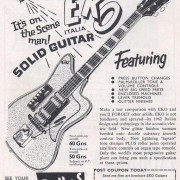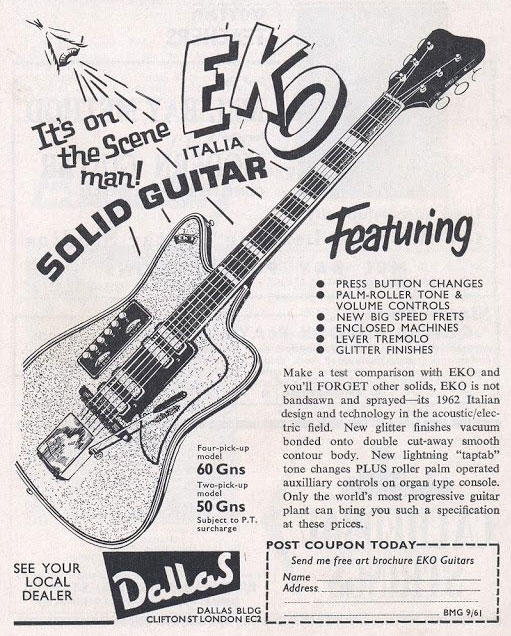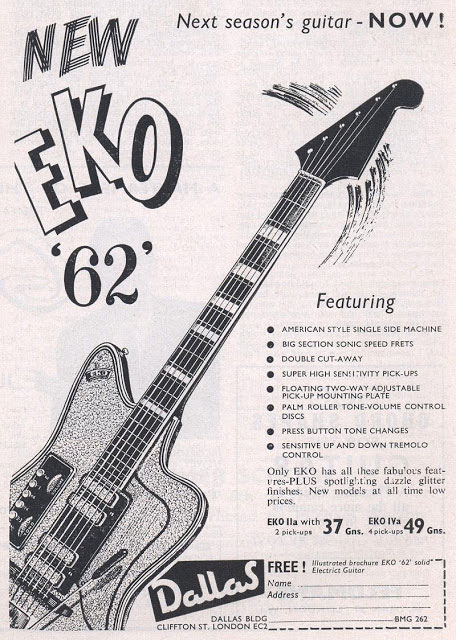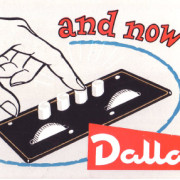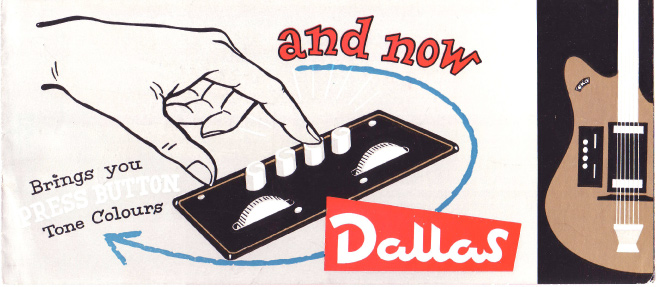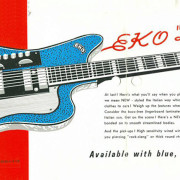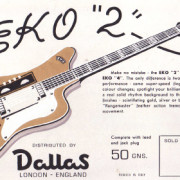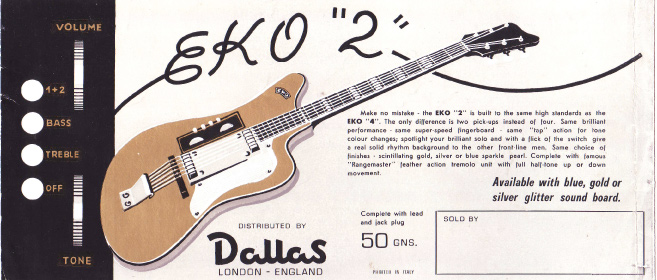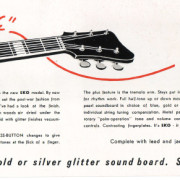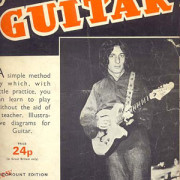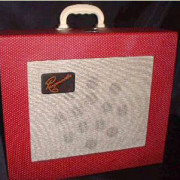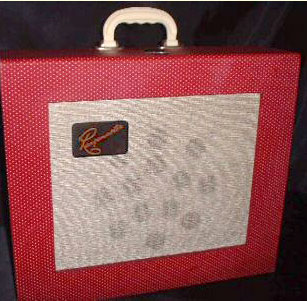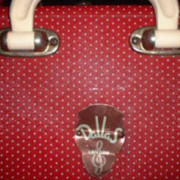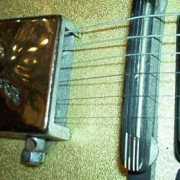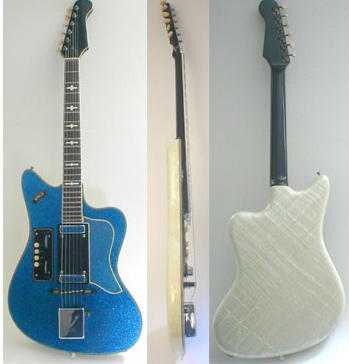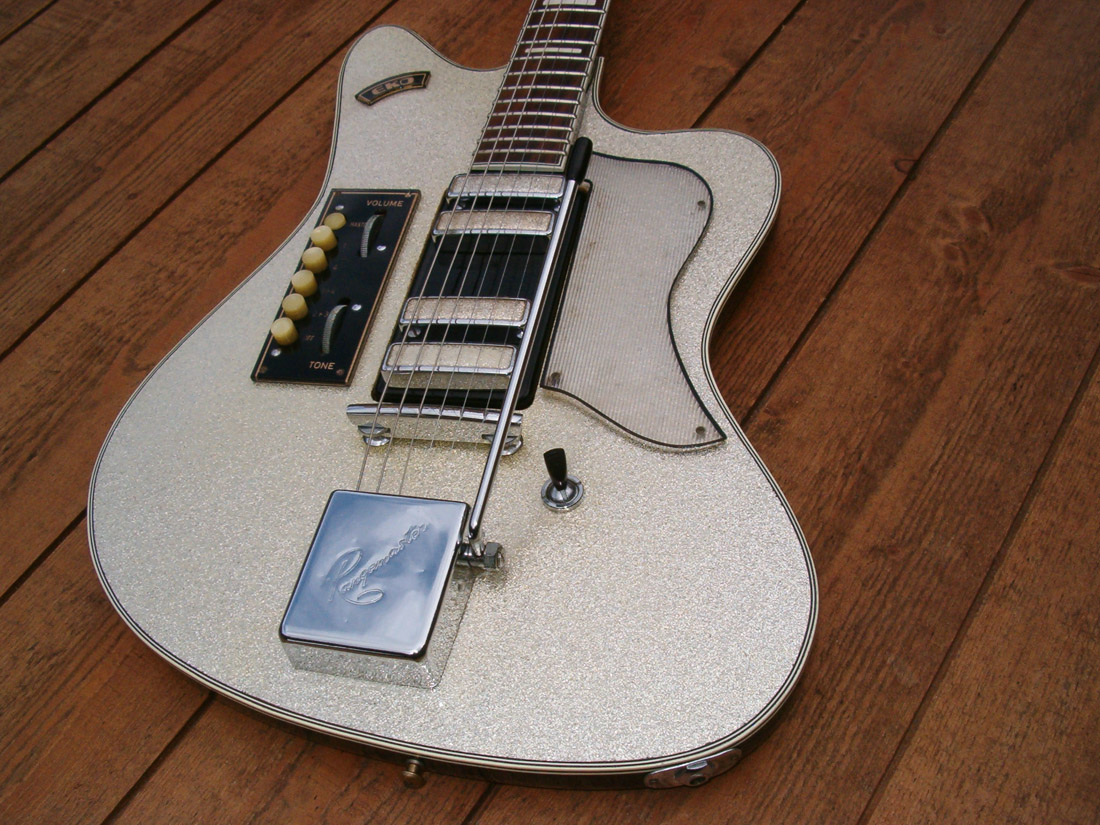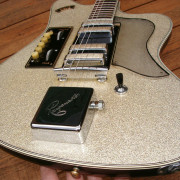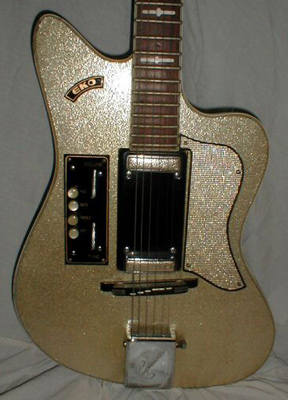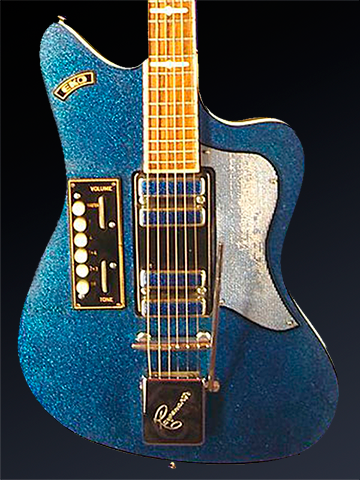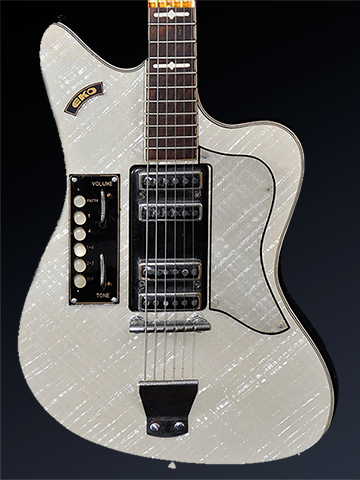Ekomaster Dallas
Dallas-badged Eko 400 that has been imported in UK by mid-1961 and fitted with a Dallas Rangemaster vibrato. Dallas was a major musical gear supplier in the 50′s and early 60′s.
Then the company was merged to British industry leader Arbiter. In addition to vibrato assemblies the brandname Rangemaster (not related in any way to Italian made Goya guitars) was applied to a variety of equipment manufactured or commissioned by Dallas, including guitar amplifiers. A couple of years later J.Dallas used this brand Rangemaster for a still very famous treble booster mini-preamp.
The very first generations of those guitars (and of other Eko series) are relatively common in UK. On the other hand all Eko versions from late 1961 and from 1962 are virtually absent from the British Isles. It seems that from the end of the agreement with J.Dallas and the outset of the cooperation with Rose-Morris Ltd Eko guitars weren’t distributed at all there, for at least one year.
All those anglicised 400’s are equipped with a particular rosewood bridge that was also mounted at the same time on various Eko semi-acoustics like the 300 Series. It was also seen of earlier Höfner Club (which is only one amongst the many similarities observed in 1960-1961 between Eko and Höfner).
That presumably German-made wooden bridge was probably chosen by J.Dallas because the original Eko all-metal item, when used with the vibrato, had stability issues due to its too narrow footprint on body. (JM)
Dallas era un importante distributore di strumenti musicali negli anni 50 e nei primi anni 60.
Poi la ditta venne fusa con il capofila britannico Arbiter. Oltre che su questo vibrato, il marchio Rangemaster (nessuna relazione con le chitarre italiane fatte per Goya) era applicato a diversi accessori fabbricati da (o per) Dallas, anche amplificatori. Qualche anno dopo J.Dallas usò il suo brand Rangemaster per un mini-preampli treble booster rimasto famosissimo.
Le primissime generazioni della 400 (nonché degli altri modelli Eko ) sono assai comuni nel Regno Unito. Invece, le Eko di qualsiasi tipo della fine del 61 e del 62 sono per così dire assenti dalle isole Britanniche. Sembra che qui tra la fine del contratto con J.Dallas e il lancio di una cooperazione con Rose-Morris Ltd la Eko sia rimasta senza distributore almeno un anno.
Le Eko 400 in versione UK, è sprovvista dei due bulloni sul retro del corpo.
Tutte queste 400 anglicizzate hanno un particolare ponticello di palissandro che veniva usato anche su alcune semi-acustiche Eko come il modello 300 ma che si erano già viste sulle Höfner Club (che è solo una delle tante somiglianze che si osservano nel 1960-61 fra Eko e Höfner).
Questo ponte in legno, di origine presumibimente tedesca, venne probabilente preferito da J.Dallas perché quello originale Eko in metallo aveva l’appoggio troppo ristretto sul corpo e poneva problemi di stabilità quando si usava il vibrato. (JM)

